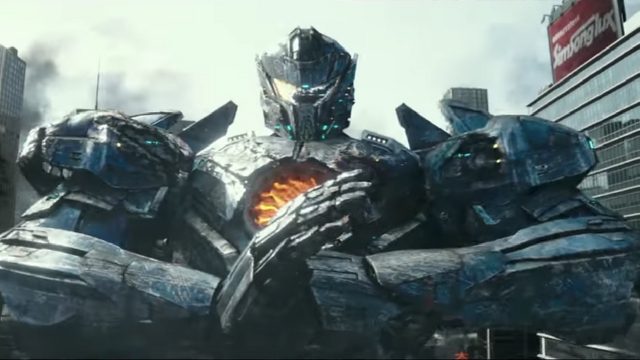SUMMARY
This is AI generated summarization, which may have errors. For context, always refer to the full article.

The most unfortunate thing about Steven S DeKnight’s Pacific Rim: Uprising is that it immediately follows Guillermo del Toro’s loving ode to his geeky obsessions and is, therefore, bound to be compared to it with hardly any favors.
Because of that, it’s likely to be seen as a commercial endeavor than a work borne out of personal passions.
Robots battling monsters
Del Toro’s Pacific Rim (2013), despite its being draped in digital wizardry as most big-budgeted blockbuster of the past few decades, is fueled not by a thirst to bombard its audience with jarring sights and sounds but to celebrate the child-like fascination with heroic robots battling giant reptilian monsters – think well-loved television shows and movies from Japan.
It would be unfair to say that DeKnight’s sequel doesn’t have the same nostalgic urges as Del Toro’s film. If anything, Uprising has the frivolous feel of many of its Japanese predecessors.
Its plot, about the remnants of the previous war with kaijus haunting the next generation, feels like it was lifted out of thin air, oblivious to ordinary logic or contemporary storytelling sophistications.
Its characters are carved out of stereotypes developed from a decades-long pop culture tradition of young men and women saving the world from rubber-suited monstrosities.
Leading the pack is Jake Pentecost (John Boyega), offspring of a fallen hero who has to live his life under the majestic shadow of a father whose legacy he can never match. Then there is his sidekick, Amara Namani (Cailee Spaeny), the similarly clichéd orphan with skills and talents that go beyond her age and experience.
The film also rehashes the good-natured rival (Scott Eastwood), the sexy and tomboyish girl (Adria Arjona) who gets in between the lead and the rival, and the always bewildered but genius scientist (Burn Gorman).
Nostalgic affectations
Uprising may not be as elegant in its nostalgic affectations to the genre as Del Toro’s film, but its attempt to replicate the crazed chaos of Japanese shows and movies is noteworthy.
Clearly, the film’s centerpiece is the climactic battle where the jaegers, the Neon Genesis Evangelion-inspired robots, confront the kaijus in the middle of Tokyo. In that sequence, DeKnight throws everything, resulting in an absurd but exhilarating display of soulless computer-generated spectacle and brash nostalgia coming together amidst the noise, the haphazard editing, and childish dialogue.
It is admittedly bad because nothing makes sense and yet despite that, it manages to wildly entertain.
Sure, Uprising is trash.
It is crafted mostly from clever but recycled ideas and half-baked bids to prolong a franchise’s lifespan. But there are parts of it that are glorious, especially in the way they trump Del Toro’s film in terms of unburdened fun and irreverence.
Mindless goal
Because of its mindless goal to simply entertain with clichéd heroes and villains fighting it out through their majestic robots and otherworldly monsters, Uprising is actually closer to the artifacts that Del Toro loved so much he decided to dedicate a blockbuster to it. – Rappler.com

Francis Joseph Cruz litigates for a living and writes about cinema for fun. The first Filipino movie he saw in the theaters was Carlo J. Caparas’ Tirad Pass.
Since then, he’s been on a mission to find better memories with Philippine cinema.
Add a comment
How does this make you feel?
There are no comments yet. Add your comment to start the conversation.